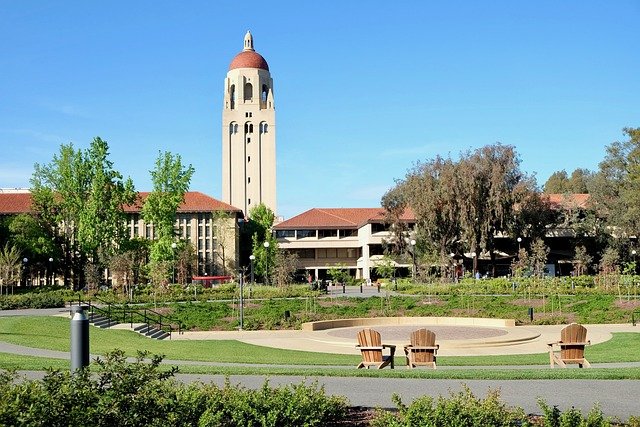Introduction
Stanford University stands as an iconic institution renowned for its commitment to academic excellence, innovation, and a nurturing environment for intellectual growth. Nestled in the heart of Silicon Valley, Stanford has evolved into a global leader in education, research, and entrepreneurship. In this article, we will explore the rich history, academic offerings, campus life, and the unique aspects that make Stanford University a beacon of learning.
History of Stanford University
- Founding Vision: Established in 1885 by Leland and Jane Stanford, the university was envisioned as a memorial to their son, Leland Stanford Jr. The founders aimed to create an institution that would contribute to society by preparing students for leadership roles in various fields.
- Early Challenges: The university faced challenges in its early years, including financial setbacks and the aftermath of the 1906 earthquake. However, it emerged stronger and more resilient, shaping its destiny as a premier educational institution.
- Academic Milestones: Over the years, Stanford has achieved numerous academic milestones, attracting renowned faculty and producing influential research across disciplines.
Academic Offerings
Undergraduate Programs
- Diverse Majors: Stanford offers a wide array of undergraduate majors, from humanities and social sciences to engineering and natural sciences, allowing students to explore their interests and passions.
- Interdisciplinary Opportunities: The university encourages interdisciplinary studies, fostering a holistic approach to education. Students can combine diverse fields, creating a unique academic journey.
Graduate Programs
- Cutting-edge Research: Stanford’s graduate programs are at the forefront of research and innovation. The university boasts world-class faculty and state-of-the-art facilities, providing an unparalleled environment for advanced studies.
- Professional Schools: Stanford encompasses professional schools in areas such as business, law, medicine, and engineering, ensuring comprehensive education for those seeking specialized knowledge.
Campus Life
Vibrant Community
- Diverse Student Body: Stanford takes pride in its diverse and inclusive community. Students from various backgrounds and cultures contribute to a vibrant and dynamic campus atmosphere.
- Extracurricular Activities: Beyond academics, Stanford offers a plethora of extracurricular activities, including clubs, sports, and cultural events, promoting a well-rounded student experience.
State-of-the-Art Facilities
- Innovation Hubs: As the epicenter of Silicon Valley, Stanford provides students with access to cutting-edge technology and entrepreneurial opportunities. The university’s innovation hubs play a crucial role in fostering creativity and collaboration.
- Libraries and Research Centers: Stanford’s libraries and research centers house extensive collections and resources, supporting students and faculty in their academic pursuits.

Unique Aspects
The Stanford “Duck Syndrome”
- Surface Calm, Deep Intensity: Coined as the “Duck Syndrome,” Stanford’s culture often reflects a calm exterior while students navigate intense academic and extracurricular commitments. This unique aspect highlights the resilience and determination ingrained in the student body.
The Dish
- Iconic Landmark: The Dish, a large radio telescope, is an iconic landmark on Stanford’s campus. Surrounded by picturesque hiking trails, it symbolizes the university’s commitment to exploration and discovery.
Table of Comparisons
| Aspect | Stanford University | Other Universities |
| Location | Silicon Valley | Varied |
| Undergraduate Majors | Diverse | Varies by school |
| Graduate Research Facilities | State-of-the-art | Varies by discipline |
| Diversity and Inclusion | Emphasized | Varies |
FAQs
Q: How competitive is admission to Stanford?
A: Stanford’s admission is highly competitive, with a low acceptance rate. However, the university values holistic qualities, including extracurricular activities and personal experiences.
Q: What is the significance of the “Duck Syndrome”?
A: The “Duck Syndrome” at Stanford refers to the outward appearance of calmness while dealing with intense pressure. It highlights the resilience and determination of Stanford students.
Conclusion
In conclusion, Stanford University stands tall as a beacon of academic excellence, innovation, and inclusivity. Its rich history, diverse academic offerings, vibrant campus life, and unique aspects contribute to a transformative educational experience. As an institution at the forefront of research and technological advancement, Stanford continues to shape the future leaders and contributors to society. Whether you aspire to explore the arts, sciences, or entrepreneurship, Stanford University offers a world-class environment for learning and growth.
